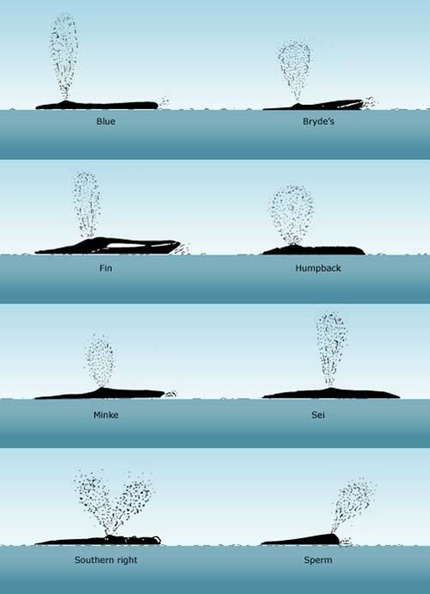By Catherine Drake, Invertebrate Zoology Lab

These are some exciting times in the Monterey Bay! Recently, five different species of whales have been spotted within our bay! We all have probably seen the humpbacks that have been hanging around since there is still available food for them. Normally, they are only here April to October and are otherwise migrating south to their calving grounds, but the last few years they’ve been staying put as the water has been warm and the food has been plentiful.
Additionally, as straggling gray whale moms with their calves head north to Alaska (usually they're here in January and February), orcas are chasing the moms in hopes of separating them from their calves. "When I find a dead gray whale the first thing I do is I go look at the tongue, and if it is missing, I know it was killed by a killer whale," our very own director Jim Harvey told the Monterey Herald.
These three species of cetaceans (science-y word for dolphins, whales, narwhals) have also been joined by blue whales and fin whales. It's not uncommon to see blue whales along our coast, but they are often seen further offshore. However, this week a blue whale was spotted only a mile or two offshore of the Monterey Bay Aquarium eating krill.
As for fin whales, not much is known about this elusive species. They are said to have a “cosmopolitan” distribution, meaning they can be found in most oceans around the world. As a result, their migration patterns aren’t well known. Scientists believe that the North Atlantic population may migrate south past Bermuda and into the West Indies. On our coast, fin whales are more often seen in the Gulf of California year round, with more appearing in the winter and spring.
Fun Facts About These Five Cetaceans:
- At least 3 different species of barnacles are commonly found on both the flippers and the body of the humpback whale.
- The Gray whale was designated as the California State Marine Mammal in 1975.
- Gray whales used to be known as Devilfish. They were named so by early hunters who noted the gray whale’s intense fighting behavior to protect themselves and their young while being hunted.
- The orca, also known as a killer whale, is actually the largest member of the dolphin family. They have the second largest brain of any animal, and it is almost four times the mass of a human brain (the sperm whale has the largest brain).
- The blue whale is the biggest animal that has ever lived! And the fin whale is the second largest!
- Fin whales are notorious for their speediness, and naturalist Roy Chapman Andrews once called it the “greyhound of the sea for its beautiful, slender body is built like a racing yacht and the animal can surpass the speed of the fastest ocean steamship.”
Also, did you know that you can tell the difference between whales by their “whale spouts” or “whale blows”? Check out the photo below to see the different types, some of which are the whales you’ll see in the bay. Not in the diagram is the gray whale, which actually has a blow in the shape of a heart! Of course, on a really windy day, it would be harder to tell, but otherwise it is a great tool to use and, I can tell you from experience, it actually works!


